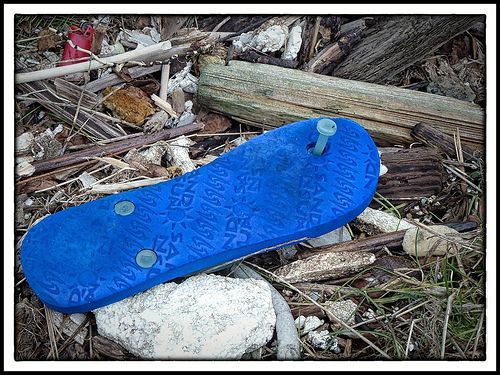Cheap Flip-Flops Put Tendons, Toes, And Ligaments In Danger: How Two Slabs Of Rubber Are Killing Your Feet

The summer season is all but synonymous with flimsy footwear. While thin-soled flip-flops offer near bare exposure to the light breeze or warm sand, the long-term dangers of wearing unsupportive flip-flops are bountiful, with several points on the foot and leg experiencing the brunt of the damage.
Even though a host of free running enthusiasts push the benefits of a barefoot, or at least minimalist, lifestyle, the drawbacks of such a way of life arise mainly from modernity. While lush grass and fine sand pose little threat to your feet, concrete sidewalks and pavement still do. And experts say putting only a thin piece of rubber between your feet and that harsh terrain spells disaster in the long-run.
"Everything in your body starts with how you strike your heel to the ground," said Bob Thompson, executive director for the Institute for Preventive Foot Health, adding that a flip-flop's design demands the wearer actively prevents it from falling off.
"You're taking your five toes and grabbing your shoe to make sure it doesn't slide out," he said. "That action of the toes grabbing the shoe on the toe box is not normal."
One of the principal flaws with conventional thin-sole flip-flops is how they lay a foundation for the rest of your posture. As feet are the body's first point of contact with the ground, the foot bones' alignment guides the rest of the skeleton moving upwards. Poor arch support could put the ankles out of place, causing misalignment of the hips and spine. Over time, the simple act of wearing flip-flops could turn into painful spinal injuries.
Dangers also abound in the short term, such as stepping on items that could easily puncture the flip-flop's thin bottom. Strictly in terms of foot health, a number of body parts also face the risk of injury when a person wears unsturdy flip-flops.
Ankle pain can result from unsupported rolls or twists, as many flip-flops do not have straps to support the ankle. Heel pain occurs when the ligaments underfoot are stretched too far or too tight. People who experience this pain report it feeling like a stabbing or burning sensation in their heel. By the same accord, people who overstretch these ligaments, which are called plantar fascia, may feel a piercing pain, similar to a thorn, on the underside of the foot.
Toe-curling during a person's gait can also result in hip, neck, and head problems.
The alternative for thin-soled flip-flops, if you're staunchly opposed to wearing shoes or sneakers of any kind, are flip-flops with cushioning and arch support. In addition to being stiffer, which provides greater stability, bulkier flip-flops will accommodate a person's natural arch in the feet.
Such alternatives are highly recommended for people with diabetes or other pre-existing conditions that can affect foot health, said Noreen Oswell, a podiatrist at The Foot Center at the Cedars-Sinai Medical Towers in Los Angeles. However, even Oswell believes flip-flops aren't designed for habitual use, and that there's no substitute for a humble tennis shoe.
"The number one best shoe for everybody is a good athletic shoe," she said, "something that laces up and has good structure to it."



























